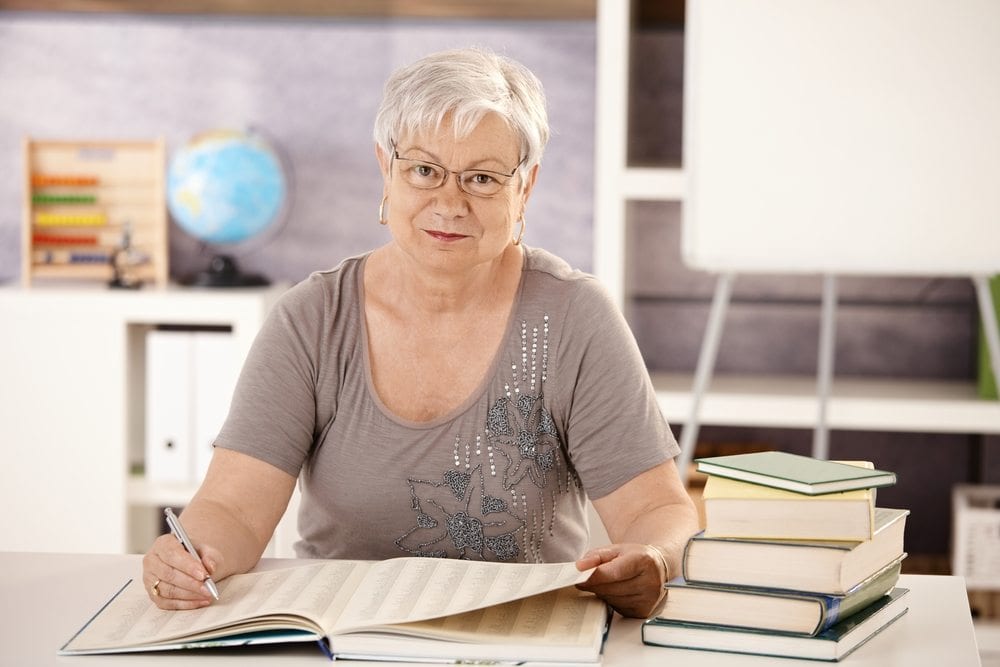At the end of the day, after a long morning and much longer evening commute, all anyone ever wants to do is sit down and relax. Many of us have thought the same thing day after day as soon as we set foot in our homes. However we’ve forgotten one little thing – that we’ve already been sitting all day! The typical nine to five corporate office job can make it difficult to get our blood flowing, keep our energy levels raised and avoid fatigue from overcoming our ability to be more active. Sitting all day can cause a variety of adverse health issues that affects our bodies such as weight gain, poor circulation and the most common condition of them all—varicose veins.
What are varicose veins and what causes them?
Varicose veins can be seen in the neck, chest, hands, and arms, but are most commonly located in the lower half of the body. These veins are primarily visible around the ankles and in the legs as blue, swollen, and rope-like on the surface of the skin. Generally, we find varicose veins in areas that are the most stressed concerning excess weight bearing down on the limbs.
Common symptoms of varicose veins:
- Aching legs
- Pain when walking
- Itching or burning sensations in the legs
- Cramping
- Swelling
- Restless legs
Varicose veins are caused by a number of factors including genetics, obesity, lifestyle, pregnancy, hormonal fluctuations, specific medications, aging and prolonged bouts of sitting. In a constant seated position, pressures on the limbs are magnified and the likelihood we will develop varicose veins increases by nearly 20%.
The more pressure we put on the deep veins that are supported by muscle and tissues, the more they will become overloaded and unable to pump blood sufficiently. Blood that cannot move upward toward the heart, because of weak veins, gets pushed outward to the surface veins. Varicose veins are the result of pooling blood and the pressure on the veins to support the excess.
How Sitting Creates Varicose Veins
Sitting creates unhealthy and insufficient veins and one-way valves that are intended to move blood consistently forward. The average person spends eight to ten hours sitting throughout the day, sometimes without frequent walking or standing breaks to relieve the pressure in the lower limbs. Sitting also depresses the veins and lowers their ability to move blood back up the body against gravity toward the heart.
Top 5 Affected Sitting Professions
- Office professionals
- Lawyers
- Flight attendants
- Teachers
- Writers
When sitting all day, not only are the overall shapes of veins compromised, but the muscles that support deep veins (and act as a secondary pump to move the blood upward) are weakened as well. When we’re seated, our muscles are in a relaxed position that allows the tissues to break down over time; if the muscles are weak, our veins are not supported properly and blood will begin to pool. The weaker the muscles, the harder the veins need to work to accommodate excess blood.
How to Prevent Varicose Veins
For those that cannot avoid sitting hours at a time, it’s important that low-impact exercise is done every few hours to reduce the chance of developing varicose veins. To help boost muscle activity in the lower limbs, stretching or pedaling of the feet periodically throughout the day will engage the muscles and contribute to improved circulation.
Schedule Your Varicose Vein Consultation
If you are experiencing signs and symptoms of varicose veins and want to reduce their appearance, call Canada Vein Clinics at 1-888-876-8346 to schedule your complimentary consultation. We offer our clients the ability to be free of varicose veins through Sclerotherapy, Endovenous Laser Ablation, Mini-Phlebectomy, VenaSeal or ClariVein treatments, and will have you back on your feet in no time.
Consultation
by Alan. Trufal
Category: generalAfter 3 veinous ultrasounds, due to a swollen left leg and painful ankle when walking, I got my doctor to refer me to Canada Vein Clinic. Another ultrasound was done in house. I lucked into a virtual consultation with Dr. Matz himself, shortly after , fully expecting a recommendation for one of the vein treatments . Laser was what I expected. Much to my surprise , after being asked a number of questions relating to my symptoms, Dr. Matz suggested that there was no serious vein problem . He recommended an arterial ultrasound, which was also done in house , shortly afterwards. Before I forget , I would also like to thank the staff , and in particular Sasha , for all her help and concern. It appears that I do have minor vein and artery issues in my left leg. But , nothing that would require any intervention at this point in time. I cannot thank Dr. Matz enough. I believe he is a very honest , caring and most competent doctor . If I ever do need a vein procedure , I will return to have Dr. Matz do it.
VenaSeal
by Billie Johnston
Category: generalGreat experience at Canada Vein Clinic. I had the procedure done approximately 3 years ago to remove my varicose veins. It has taken me this long to leave a review because I wanted to be sure it lasted. It has! I was VERY nervous, but on the day of the procedure felt comfortable and confident that I was "in good hands". The actual procedure was not painful and not even uncomfortable. However, 3 or 4 days after, I did develop pain and discomfort (because I did not follow instructions). It was recommended that I apply Arnica and I did not. When I developed the pain, I did start applying the Arnica and within a day everything was as it should be. Highly recommend Canada Vein Clinic. Very professional, courteous, and informative. And my leg is still smooth and vein free after 3 years!
Venalseal
by Gisele McCann
Category: vein therapyI had contacted Dr.Matz at the Canada Vein Clinic to have removal of some very large veins reviewd. Since I have some medical issues, Dr.Matz suggested that the safest way to achieve this would be with the venaseal procedure. Ultrasounds confirmed that this would be the safest way. I was aware that it may not result in a 100% result. The procedure was basically pain free with a minimal amount of bruising and very fast recovery. Multible Ultrasound checks over 1 years Confirmed that the procedure was successful and improved with time. I submitted pictures for a telephone consultation with Dr.Matz and was assured that minor issues could be addressed at a later date. I was treated with the utmost professionalism by Dr.Matz and the clicic staff. I would recommend to get an assessment by Drt.Matz at Canada Vein Clinics. GMCC
Never felt better
by Lori Brummell
Category: vein therapyOne year ago I got my various veins done. My legs have never felt better. It is expensive but well worth it.
Venaseal Treatment
by Francesco Giordano
Category: vein therapyMy varicose vein was so bad that my calf was almost double the size of the other one. After my Venaseal treatment with Dr. Matz, it has shrunk down to the same as the other one with some minor bruising as the only evidence left of the varicose vein. All the staff at the clinic were friendly and kind. Overall it was a great experience.
Powered by Crystal Clear Digital Marketing Reviews



